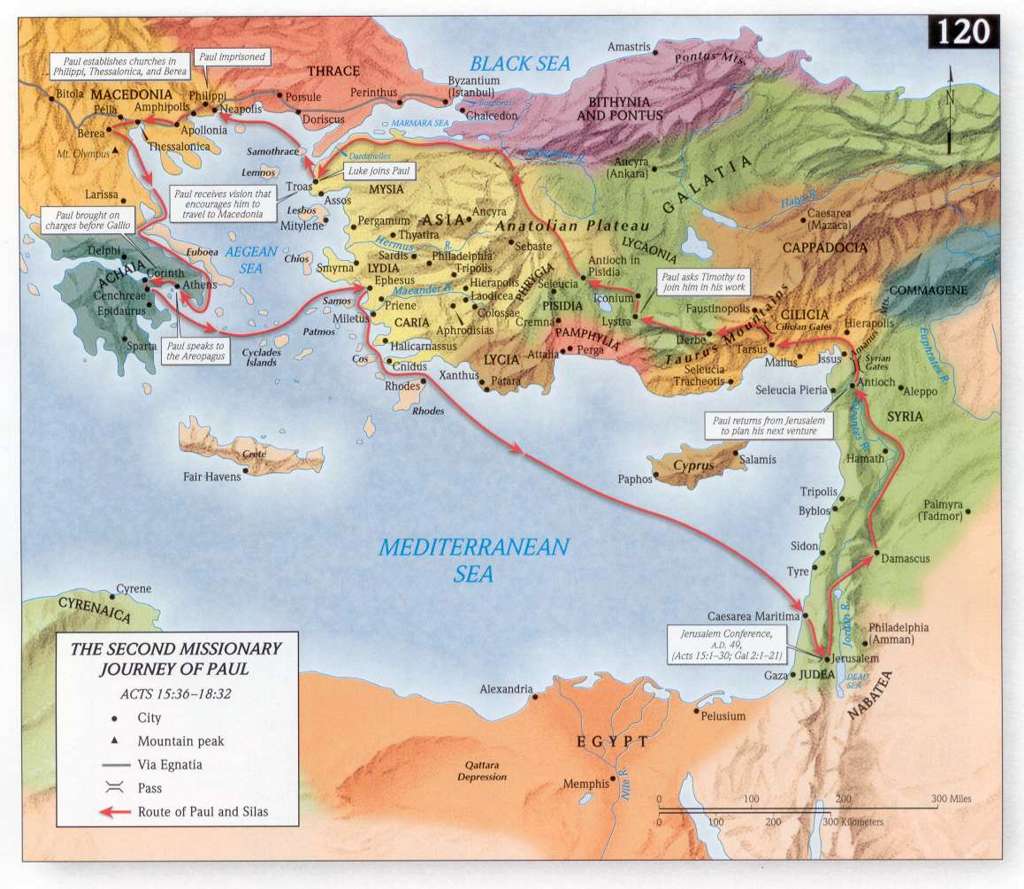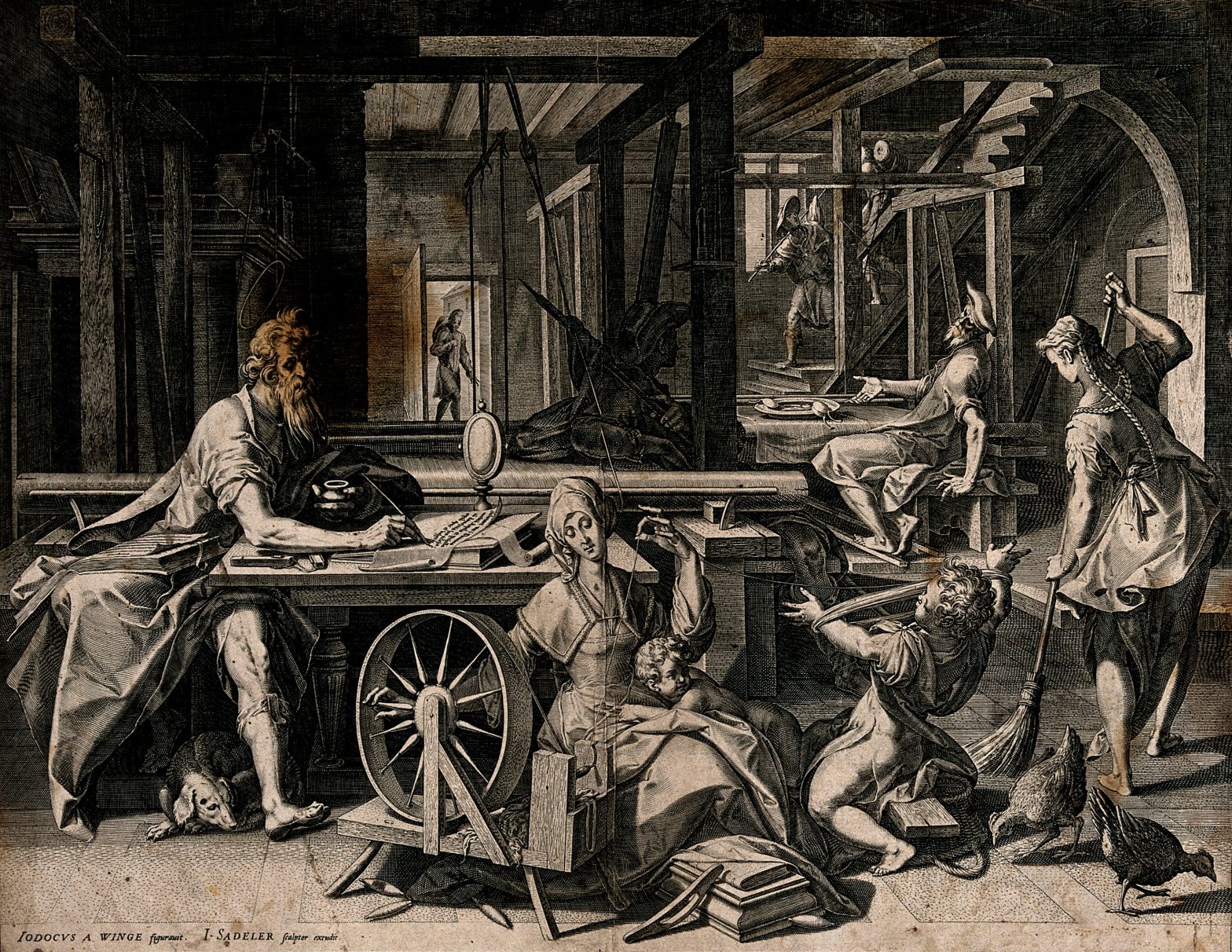
Priscilla (/prɪˈsɪlə/; Greek: Πρίσκιλλα, Priskilla or Priscila) and Aquila (/ˈækwɪlə/; Greek: Ἀκύλας, Akylas, “an eagle”) were a early Christian missionary couple described in the New Testament. In every place where the Bible refers to Aquila or Priscilla, it speaks of them together, suggesting that they formed a useful and well respected partnership.
Aquila, a Jewish Christian, and his wife, Priscilla, first met Paul in Corinth, became good friends of his, and shared in his work.
The careful description of Aquila as ‘a Jew, a man of Pontus’ (Acts 18:2), rather implies that Priscilla his wife was not a Jewess; because her name is usually put first (4 out of 6 times), it is thought that she was of higher social standing than her husband. Another explanation of why Priscilla’s name comes first may be that she was the more vigorous and intelligent Christian worker. [1]

Aquila and Priscilla were living in Rome at the time of an outbreak of anti-Jewish feeling when the Emperor expelled all Jews from the city. They moved to Corinth in Achaia, the southern part of Greece, where they met Paul. Possibly at this time they became Christians ( Acts 18:1-3).
When Paul left Corinth for Ephesus eighteen months later, Aquila and Priscilla went with him, and remained in Ephesus when Paul moved on ( Acts 18:11; Acts 18:18-19). They probably helped to establish the church in Ephesus. In particular they helped Apollos, a newly converted Jewish teacher who had come to Ephesus from Egypt ( Acts 18:24-26). They remained in Ephesus to help Paul when he returned to the city for a three-year stay ( Acts 19:1; cf. Acts 20:31), during which he wrote the letter known to us as 1 Corinthians. At this time the church in Ephesus used the house of Aquila and Priscilla as a meeting place ( 1 Corinthians 16:19).
Some time after this, when Jews were allowed back in Rome, Aquila and Priscilla returned to live there for a time. They continued to serve God wholeheartedly, and their house in Rome, like their house in Ephesus, became a church meeting place ( Romans 16:3-5).
Many years later Aquila and Priscilla were living back in Ephesus, no doubt helping Timothy in the difficult work Paul had given him to do there. Paul’s greeting to them just before his execution is the final reference to them in the New Testament ( 2 Timothy 4:19; cf 1 Timothy 1:3).
New Testament references
They are mentioned six times in four different books of the New Testament, always named as a couple and never individually.
- Acts 18:2–3: “There he became acquainted with a Jew named Aquila, born in Pontus, who had recently arrived from Italy with his wife, Priscilla. They had left Italy when Claudius Caesar deported all Jews from Rome. Paul lived and worked with them, for they were tentmakers just as he was.”
- Acts 18:18: “Paul stayed in Corinth for some time after that, then said good-bye to the brothers and sisters and went to nearby Cenchrea. There he shaved his head according to Jewish custom, marking the end of a vow. Then he set sail for Syria, taking Priscilla and Aquila with him.”
- Acts 18:26: “When Priscilla and Aquila heard him preaching in the synagogue, they took him aside and explained the way of God even more accurately.”
- Romans 16:3: “Give my greetings to Priscilla and Aquila, my co-workers in the ministry of Christ Jesus.”
- 1 Corinthians 16:19: “The churches here in the province of Asia send greetings in the Lord, as do Aquila and Priscilla and all the others who gather in their home for church meetings.”
- 2 Timothy 4:19: “Give my greetings to Priscilla and Aquila and those living in the household of Onesiphorus.”
Of those six references, Aquila’s name is mentioned first only twice, Priscilla’s name is mentioned first on four occasions; this may indicate her equal status with her husband, or even possibly that Priscilla was thought of as the more prominent teacher and disciple. It is particularly to be noticed that she took part, not only in her husband’s exercise of hospitality, but likewise in the theological instruction of Apollos. Yet we observe that the husband and the wife are always mentioned together. In fact, we may say that Priscilla is the example of what the married woman may do, for the general service of the Church, in conjunction with home duties, as Phoebe is the type of the unmarried servant of the Church, or deaconess. Such female ministration was of essential importance in the state of society in the midst of which the early Christian communities were formed.
References:
